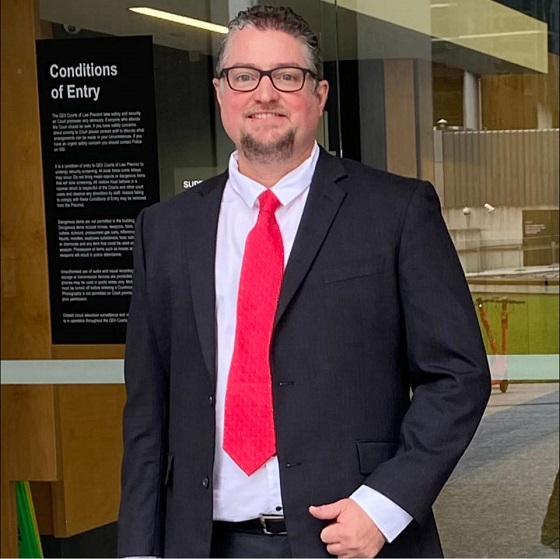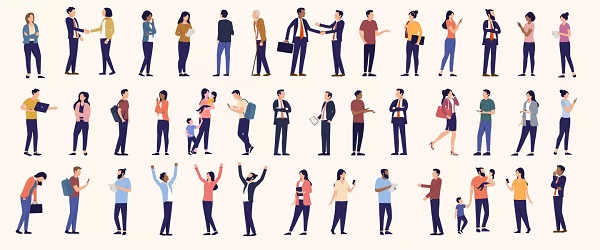Brownstone Institute
Governor Andrew Cuomo: From Hero to Goofball in One Seasonal Virus
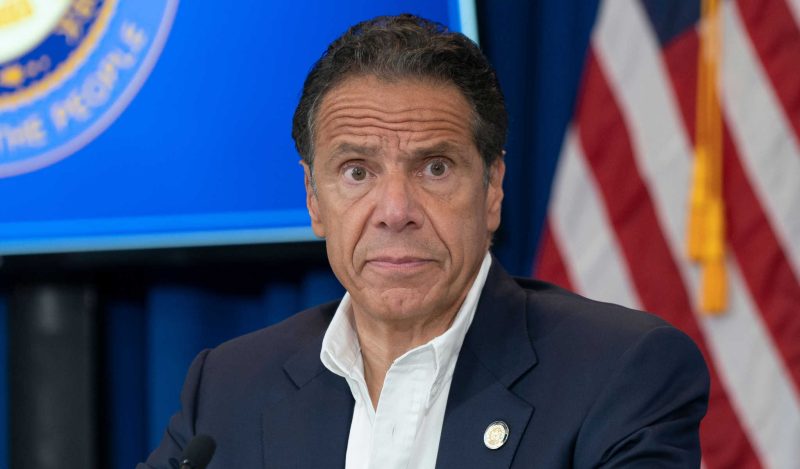
BY
Oh joy, another book by a hero of lockdowns! This time it is from Andrew Cuomo, who rode the disease-panic wave to the heights during the confusion of Spring 2020 before falling to the depths a year later. The adoring crowds, the fawning media, the enthralled masses all went away in a seeming flash, entirely due to some alleged untoward romantic gestures about which some complained.
Cuomo accomplished the deed and then was thrown to the dogs. He went from angel to devil practically overnight. One day he was saving New York from Covid – surely he will soon be president! – and the next he was waking up with nothing to do but look over his royalty checks.
Let us see what he has to say in his memoir. The book was written when he was at the height of his fame, but then withdrawn by the publisher when he crashed to the ground. But as it happens, there are contracts and advances and royalties at stake, so here we are now: American Crisis: Leadership Lessons from the COVID-19 Pandemic. The tone is confident, aggressive, sure-footed, and completely wrong.
We know for sure that he will not admit to having abused his power, personally or politically. He will not say that he had any part in wrecking New York, its commercial culture, its citizens’ sense of self-worth, or its religious freedoms. He will nowhere say that he went too far. He will not admit that he was a craven media tool or that he followed the mania in order to position himself for higher office. He will say none of that, any more than the rest of them have said that.
What does he say? Well, the book is more self-effacing than I expected, even disarming. He tells a good story concerning his personal life and struggles. It seems even sincere, and readers can connect with his professional rise then fall then rise again…and his subsequent fall again. His ideology is on display to the max: a progressive who believes strongly in government in its ideal but is always disappointed in its practice.
But the book is also strange for what it takes for granted, namely that locking down is the proper path to deal with infectious disease. Viruses in all times and places arrive, infect some portion of the population depending on prevalence, bear responsibility for the death of others, and eventually become endemic, which is to say, something we live with. This one was no different in any of its properties. What made this one different was its politicization and the casual but universally held view that life itself had to be fundamentally disrupted by government because of it.
Cuomo himself sneaks this presumption in from the start:
An airborne virus was one of the nightmare scenarios envisioned as a terrorist plot. It is easy to create chaos and overwhelm society with fear when people are afraid to breathe the air. There would be no good news with this virus and no good outcome. Schools and businesses would be closed. The economy would suffer. People would die. Nothing we could do would be enough. There was no possibility for victory, and even FDR and Churchill had at least the possibility of a successful outcome.
Really? No good outcome at all? Failure was baked in? Also, what is this passing mention of schools and businesses being forced to close? That did not happen in South Dakota, Sweden, Nicaragua, or Belarus. Why this concession to massive coercion when such had never been done in past pandemics? Where does this come from? And why did the governor just toss that in there? Why did he never rethink in the midst of his most egregious actions?
Keep in mind that he put this book to bed in the fall of 2020, just before his resignation following his call to open up New York. Here he writes that he defeated the virus. “New York State, a microcosm of the nation, has shown a path forward. We have seen government mobilize to handle the crisis. We have seen Americans come together in a sense of unity to do the impossible. We have seen how the virus is confronted and defeated.”
Remarkable. Consider the following two charts.


What these charts show is what one might have expected from any new virus of this sort with this risk profile. It killed. Then it infected more. Then 99.8% of those infected shook it off and obtained an upgraded immune system, no thanks to the vaccine that stopped neither infection nor spread. Then life got back to normal. Every bit of this trajectory was easily predictable regardless of what government did or did not do.
The virus did not need Cuomo to battle it: the human immune system does the hard work and governments are mere spectators. Public health knew that for decades until suddenly they did not. The temptation to be a hero was too great for vast numbers of people holding public office, Cuomo among them.
What government did was wreck much more than was necessary in the name of doing something. What’s worse is that the things government did reversed the higher-level knowledge that the one group that needed protection from the virus was the vulnerable population, in this case, the elderly and infirm.
Cuomo, on the other hand, signed an order, replicated in many other states, to force nursing homes to accept Covid patients in the extra rooms. No choice. They had to. This led to tens of thousands of unnecessary deaths. More on that in a moment.
On lockdowns, Cuomo simply bakes into the prose the idea that they had to happen. They began in New Rochelle, NY.
“No one was ready to accept that they needed to change how they were living…. As we saw in Westchester that day, local parochial concerns would butt up against major, wide-ranging changes that had to occur in order to combat the virus. As we were instituting this lockdown on New Rochelle, one Democratic assemblywoman who represented Westchester came to my office demanding a meeting; then she simply sat in the second row at a press conference and scowled at me.”
And that’s it: lockdown is the whole scheme. He never doubts it, never even argues for it.
The day after our first COVID case, the legislature passed the law giving the governor emergency powers to handle the crisis. If the legislature had not passed the law, I would not have had the power to do what I would soon do. There would be no executive order closing businesses or schools, no order requiring masks or social distancing. … The law was smart, and it has proven successful.
Now, let’s just jump ahead to the great nursing home scandal. I was curious what Cuomo had to say. I will just quote him.
By early spring, Republicans needed an offense to distract from the narrative of their botched federal response—and they needed it badly. So they decided to attack Democratic governors and blame them for nursing home deaths…. The Trump forces had a simple line: “Thousands died in nursing homes.” It was true. But they needed to add a conspiracy, which was that they died because of a bad state policy that “mandated and directed” that the nursing homes accept COVID-positive people, and these COVID-positive people were the cause of the spread of the disease in the nursing homes. It was a lie. New York State never demanded or directed that any nursing home accept a COVID-positive patient.”
That’s fascinating because I’m almost sure that I saw such an order. I look at the New York State website and it has been taken down. I found it on the Internet Archive. It is on New York State letterhead.

It reads as follows:
COVID-19 has been detected in multiple communities throughout New York State. There is an urgent need to expand hospital capacity in New York State to be able to meet the demand for patients with COVID-19 requiring acute care. As a result, this directive is being issued to clarify expectations for nursing homes (NHs) receiving residents returning from hospitalization and for NHs accepting new admissions…. No resident shall be denied re-admission or admission to the NH solely based on a confirmed or suspected diagnosis of COVID-19. NHs are prohibited from requiring a hospitalized resident who is determined medically stable to be tested for COVID-19 prior to admission or readmission.
Oh. So it wasn’t a lie after all. And anyone can check this. Read the above. That certainly sounds like New York State directed nursing homes to accept Covid-positive patients. Denying that he did this amounts to pettifoggery over terms. The import was perfectly obvious. Why not just admit that he made a mistake?
I’m tempted to end this review there. But it actually gets worse. At one point, Cuomo writes that his heroics actually worked and that this is obvious. He is or was a completely unrepentant lockdower:
States like Arizona, Florida, and Texas that followed Trump’s demands to reopen quickly saw increased infection rates and needed to close their economies back down—reopening only to re-close. As a result, the financial markets were distressed with the volatility in these states. This stood in stark contrast to New York, where as of this writing 75 percent of our economy is open and our infection rate has been consistently 1 percent or below for nearly three months and among the lowest in the nation. It is incomprehensible that people still support Trump’s disproven theories. The states that most closely followed Trump’s “guidance” were doing the worst.
Look again at the charts above. The virus was only getting started when he turned in this text. He wrote those words during a seasonal downturn. Infections were still coming and coming in wave after wave. New York fared as bad as any state, certainly far worse than Florida or other open states. Meanwhile, New York drove residents out, and the state is in far worse economic condition than most.
And yet here he is taking credit for an intelligent and hands-on approach that wrecked the lives, liberties, and property of residents of the state, who, to this day, have yet to regain their composure. He did this. He became famous and beloved for it. And to this day, based on this book, he still believes that he was right.
Cuomo can’t imagine – truly – that he might have done anything wrong except perhaps communicated more clearly. In truth, governments could have forced everyone to paint their faces bright blue and wear frying pans for shoes and it would not have changed the pandemic outcome from what it was going to be. The virus never cared. But don’t tell that to Cuomo: the upshot of his book is that he saved New York. Nothing will convince him otherwise.
In short, don’t read this book looking for an apology. These politicians all panicked, as John Tamny argued from the beginning. No matter the policy, the pandemic was going to recede into memory, as it has. No matter how badly this class of politicians performed, somehow they all managed to claim to have done the right thing, and to earn royalties on their ghost-written accounts of their genius.
Even given everything, the book is not all bad. His personal stories are self effacing and engaging. He is a real person with a real life, with choices to make, risks to take, difficulties to face, family struggles, and so on. He was free to engage life to its fullest in 2020, unlike the 20 million people he locked down and robbed of all such opportunities. He believed that it was the right thing to do because Fauci was saying that it was. It was not in fact the right thing to do.
I would like to end by echoing Cuomo’s tribute to those who were shoved out in front to face the virus while the laptoppers languished at home in hiding. He is exactly right to say the following:
The heroes who made this happen were the working families of New York. When we were in our moment of need, we called on the blue-collar New Yorkers to show up for everyone. We needed them to come to work and risk their health so that so many of us could stay safely at home. These are the people who have received the fewest rewards from society but from whom we now asked the most.
These are the people who would have been most justified in refusing our call. They were not the rich and the well-off. They were not the highly paid. They have not been given anything more than they deserved. They had no obligation to risk their health and the health of their families. But they did it simply because “it was the right thing to do.” But for some that is enough. For some that is everything.
These heroes are the people who live in places like Queens, where I grew up. These are the people working hard to better themselves and their families. These are parents concerned first and foremost with protecting their families, but who still showed up every day as nurses, National Guard members, train operators, bus drivers, hospital workers, police officers, grocery store employees, food delivery drivers. They are Puerto Ricans, Haitians, African Americans, Dominicans, Asians, Guatemalans. These are the immigrants who love America, who make America, and who will fight for it.
These are the heroes of this battle. When COVID began, I felt it was unfair to call on them to carry such a heavy burden. I feared I would put them in harm’s way. But we didn’t have an option if society was to function. We needed food, hospitals, and electricity to stay alive.
All through this difficult endeavor there was never a moment when these people refused to show up or leveraged more benefits for themselves. At the beginning of a battle no one knows who will actually survive. Courage is determined by the willingness to enter the field. No one knew that when we started, the infection rate among our essential workers would be no higher than the general community infection rate. They have my undying admiration and the gratitude of every true New Yorker.
We can only say to that: Amen! These people do deserve deep gratitude. They also deserve a government that will never again conscript them to go to work for the professional class in order that the well-to-do can keep clean and free of pathogens. That the people Cuomo rightly celebrates were so treated is a violation of the social contract, and now have every reason to be bitter. And don’t you love the comment that “We needed food, hospitals, and electricity to stay alive?” Who exactly is “we” here?
We know. We know all too well.
Brownstone Institute
A Potpourri of the World’s Unexposed Scandals
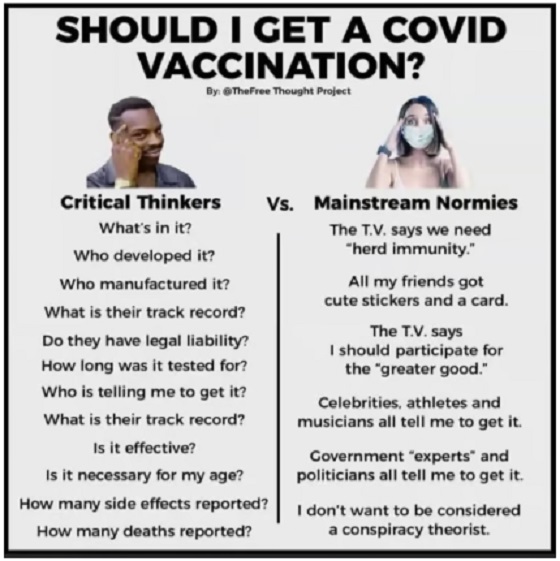
From the Brownstone Institute
By
How many genuine, shocking – and unexposed – scandals actually occurred in the last four years? To partially answer this question, I composed another of my List Columns.
The Most Epic of Scandals Might Be…
The world’s most epic scandal might be the massive number of citizens who’ve died prematurely in the last four years. This scandal could also be expressed as the vast number of people whose deaths were falsely attributed to Covid.
My main areas of focus – “early spread” – informed my thinking when I reached this stunning conclusion: Almost every former living person said to have died “from Covid” probably did not die from Covid.
The scandal is that (unreported) “democide” occurred, meaning that government policies and deadly healthcare “guidance” more plausibly explain the millions of excess deaths that have occurred since late March 2020.
My research into early spread suggests that the real Infection Fatality Rate (IFR) of Covid should have already been known by the lockdowns of mid-March 2020.
If, as I believe, many millions of world citizens had already contracted this virus and had not died, the Covid IFR would be the same, or perhaps even lower, than the IFR for the common flu – said to be 1 death per 1,000 infections (0.1 percent).
Expressed differently, almost 100 percent of people who contracted this virus did not die from it – a fact which could and should have been known early in the “pandemic.” The fact this information was concealed from the public qualifies as a massive scandal.
Evidence That Would ‘Prove’ This Scandal
Furthermore, one does not need early spread “conjecture” to reach the conclusion that only a minute number of people who were infected by this virus later died from Covid.
After April 2020, a researcher could pick any large group or organization and simply ascertain how many people in these groups later died “from Covid.”
For example, more than 10,000 employees work for the CDC. About 10 months ago, I sent an email to the CDC and asked their media affairs department how many of the CDC’s own employees have died from Covid in the past three-plus years.
This question – which would be easy to answer – was never answered. This example of non-transparency is, to me, a massive “tell” and should be “scandalous.”
To be more precise, if the CDC could document that, say, 10 of their employees had died from Covid, this would equate to a disease with a mortality risk identical to the flu.
My strong suspicion is that fewer than 10 CDC employees have died from Covid in the last four years, which would mean the CDC knows from its own large sample group that Covid is/was not more deadly than influenza.
I’ve performed the same extrapolations with other groups made up of citizens whose Covid deaths would have made headlines.
For example, hundreds of thousands if not millions of high school, college, and pro athletes must have contracted Covid by today’s date. However, it is a challenge to find one definitive case of a college or pro athlete who died from Covid.
For young athletes – roughly ages 14 to 40 – the Covid IFR is either 0.0000 percent or very close to this microscopic fraction.
One question that should be obvious given the “athlete” example is why would any athlete want or need an experimental new mRNA “vaccine” when there’s a zero-percent chance this disease would ever kill this person?
The scandal is that sports authorities – uncritically accepting “guidance” from public health officials – either mandated or strongly encouraged (via coercion) that every athlete in the world receive Covid shots and then, later, booster shots.
Of course, the fact these shots would be far more likely to produce death or serious adverse events than a bout with Covid should be a massive scandal.
More Scandals
Needless to say, all the major pediatrician groups issued the same guidance for children.
In Pike County, Alabama, I can report that in four years no child/student between the ages of 5 and 18 has died from Covid.
I also recognize that the authorized “fact” is that millions of Americans have now “died from Covid.” However, I believe this figure is a scandalous lie, one supported by PCR test results that would be questioned in a world where investigating certain scandals was not taboo.
Yet another scandal is that officials and the press de-emphasized the fact the vast majority of alleged victims were over the age of 79, had multiple comorbid conditions, were often nursing home residents, and, among the non-elderly, came from the poorest sections of society.
These revelations – which would not advance the desired narrative that everyone should be very afraid – are similar to many great scandals that have been exposed from time to time in history.
Namely, officials in positions of power and trust clearly conspired to cover up or conceal information that would have exposed their own malfeasance, professional incompetence, and/or graft.
This Might Be the No. 1 Scandal of Our Times
As I’ve written ad nauseam, perhaps the most stunning scandal of our times is that all-important “truth-seeking” organizations have become completely captured.
At the top of this list are members of the so-called Fourth Estate or “watchdog” press (at least in the corporate or “mainstream” media).
In previous articles, I’ve estimated that at least 40,000 Americans work as full-time journalists or editors for mainstream “news organizations.” Hundreds of MSM news-gathering organizations “serve” their readers and viewers.
In this very large group, I can’t think of one journalist, editor, publisher, or news organization who endeavored to expose any of the dubious claims of the public health establishment.
When 100 percent of professionals charged with exposing scandals are themselves working to conceal shocking revelations…this too should qualify as a massive scandal.
To the above “captured classes” one could add college professors and administrators, 99 percent of plaintiffs’ trial lawyers, 100 percent of CEOs of major corporations, almost all elected politicians, and, with the exception of perhaps Sweden, every one of the public health agencies in the world, plus all major medical groups and prestigious science journals.
Or This Might Be Our Greatest Scandal
Yet another scandal – perhaps the most sinister of them all – would be the coordinated conspiracy to silence, muffle, intimidate, bully, cancel, demonetize, and stigmatize the classes of brave and intelligent dissidents who have attempted to reveal a litany of shocking truths.
The Censorship Industrial Complex (CIC) is not a figment of a conspiracy theorist’s imagination.
The CIC is as real as Media Matters, News Guard, The Trusted News Initiative, the Stanford Virality Project, and the 15,000-plus “content moderators” who probably still work for Facebook.
Government officials in myriad agencies of “President” Joe Biden’s administration constantly pressured social media companies to censor content that didn’t fit the authorized narrative (although these bullying projects didn’t require much arm-twisting).
Here, the scandal is that the country’s “adults in the room” were identified as grave threats to the agenda of the Powers that Be and were targeted for extreme censorship and punishment.
When people and organizations principled enough to try to expose scandals are targeted by the State and the State’s crony partners, this guarantees future scandals are unlikely to be exposed…which means the same unexposed leaders are going to continue to inflict even greater harm on the world population.
This Scandal Is Hard to Quantify
Other scandals are more difficult to quantify. For example, it’s impossible to know how many citizens now “self-censor” because they know the topics they should not discuss outside of conversations with close friends.
This point perhaps illustrates the state of the world’s “New Normal” – a now-accepted term that is scandalous if one simply thinks about the predicates of this modifier.
It should be a scandal that the vast majority of world citizens now eagerly submit to or comply with the dictates and speech parameters imposed on them by the world’s leadership classes.
The “New Normal” connotes that one should accept increasing assaults on previously sacrosanct civil liberties.
What is considered “normal” – and should now be accepted without protest – was, somehow, changed.
As I routinely write, what the world has lived through the past four-plus years is, in fact, a New Abnormal.
This Orwellian change of definition would qualify as a shocking scandal except for the fact most people now self-censor to remain in the perceived safety of their social and workplace herds.
The bottom line – a sad one – might be that none of the above scandals would have been possible if more members of the public had been capable of critical thinking and exhibited a modicum of civic courage.
As it turns out, the exposure of scandals would require large numbers of citizens to look into the mirror (or their souls) and perform self-analysis, an exercise in introspection that would not be pain-free.
It’s also a scandal our leaders knew they could manipulate the masses so easily.
Considering all of these points, it seems to me that the captured leadership classes must have known that the vast majority of the population would trust the veracity of their claims and policy prescriptions.
That is, they knew there would be no great pushback from “the masses.”
If the above observation isn’t a scandal, it’s depressing to admit or acknowledge this is what happened.
To End on a Hopeful Note
What gives millions of citizens hope is that, belatedly, more citizens might be growing weary of living in a world where every scandal cannot be exposed.
Donald Trump winning a presidential election by margins “too big to steal” is a sign of national hope.
Mr. Trump nominating RFK, Jr. to supervise the CDC, NIH, and FDA is definitely a sign of hope, an appointment that must outrage and terrify the world’s previous leadership classes.
For far too long, America’s greatest scandal has been that no important scandals can be exposed. Today, however, it seems possible this state of affairs might not remain our New Normal forever.
Republished from the author’s Substack
Brownstone Institute
Freedumb, You Say?
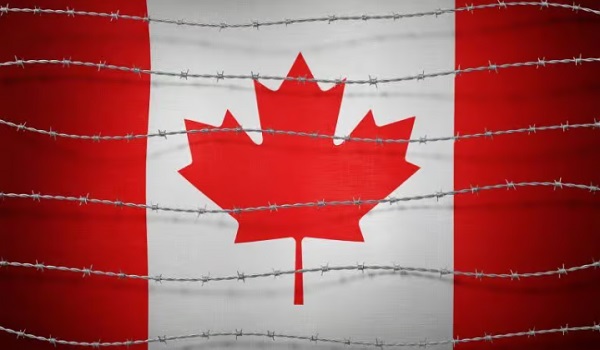
From the Brownstone Institute
By
“Authorities have attacked, detained, prosecuted, and in some cases killed critics, broken up peaceful protests, closed media outlets, and enacted vague laws criminalizing speech that they claim threatens public health”
Didn’t give much thought to freedom until four years ago, at age 63. Freedom was just there, like the water surrounding a goldfish. And then the Covid-19 pandemic blew in, the world locked down, and admonitions to “stay the ‘$^#&’ home” blazed through social media. No freedom was too important to discard in the name of public safety: jobs, family businesses, artistic endeavours, public meetings, social connections that kept despair at bay, all took a backseat to the grim business of saving grandma (who ended up getting Covid anyway). No discussion of moral or practical trade-offs, no pushback from the press, nothing. It felt wrong to me on a cellular level.
Apparently I was the only one in my middle-class liberal circle to harbour misgivings about this astonishing new world. If I tried, ever so timidly, to articulate my concerns on Facebook or Twitter, the online warriors shot back with a string of epithets. “Go lick a pole and catch the virus,” said one. “Crawl back into your cave, troglodyte,” said another. And my all-time favourite: “You’re nothing but a mouth-breathing Trumptard.”
From the get-go, I perceived Covid as more of a philosophical problem than a scientific one. As I wrote on more than one occasion, science can inform our decisions, but not dictate them. What ultimately powers our choices are the values we hold. I saw Covid as a morality play, with freedom and safety cast as the duelling protagonists, and it looked like safety was skipping to an easy victory.
It was a heady time for the health bureaucrats, whose increasingly arcane rules betrayed a naked impulse to control: the Canadian high-school students required to use masks on both their faces and their wind instruments during band practice, the schoolchildren forced (for hygiene reasons) to study on their knees for hours in an Alaska classroom, the “glory-hole” sex advised by the British Columbia Centre for Disease Control. The lack of public pushback against these absurdities heightened my awareness of the fragility of our freedoms.
One of the earliest memes to surface during the pandemic was “muh freedumb.” The locution became a shorthand for a stock character – a tattooed man wearing camo gear and a baseball cap, spewing viral particles while yelling about his rights. A selfish idiot. The memes kept coming: “Warning, cliff ahead: keep driving, freedom fighter.” “Personal freedom is the preoccupation of adult children.” Freedom, for centuries an aspiration of democratic societies, turned into a laughing stock.
Eventually, pro-freedom voices began trickling into the public arena. I wasn’t alone, after all. There were others who understood, in the words of Telegraph writer Janet Daley, that the institutional response to Covid-19 had steamrolled over “the dimension of human experience which gives meaning and value to private life.” Lionel Shriver decried how “across the Western world, freedoms that citizens took for granted seven months ago have been revoked at a stroke.” And Laura Dodsworth brought tears to my eyes when she wrote, in her 2021 book A State of Fear, that she feared authoritarianism more than death.
Once the vaccines rolled out, the war on freedom of conscience went nuclear. If you breathed a word against the products, or even the mandates, you were “literally killing people.” The hostility towards the “unvaxxed” culminated in a Toronto Star front page showcasing public vitriol, splashed with such sentiments as: “I honestly don’t care if they die from Covid. Not even a little bit.”
This, too, felt viscerally wrong. I knew several people who had refused the vaccine, and they all had well-articulated reasons for their stance. If they didn’t fully trust the “safe and effective” bromide recycled by all government and pharmaceutical industry spokespeople, I could hardly blame them. (And I say this as someone who writes for Big Pharma and got five Covid shots.)
One of the most deplorable casualties of Covid culture was freedom of expression, a core principle in the United Nations’ Universal Declaration of Human Rights. Experts speaking publicly about the harms of lockdown faced systematic ostracism from mainstream media, especially left-wing news outlets. By early 2021, Human Rights Watch estimated that at least 83 governments worldwide had used the Covid-19 pandemic to violate the lawful exercise of free speech and peaceful assembly.
“Authorities have attacked, detained, prosecuted, and in some cases killed critics, broken up peaceful protests, closed media outlets, and enacted vague laws criminalizing speech that they claim threatens public health,” the group wrote in a media release. “The victims include journalists, activists, healthcare workers, political opposition groups, and others who have criticized government responses to the coronavirus.”
But what about misinformation? Doesn’t it kill people? Newsflash: misinformation has always existed, even before TikTok. It’s up to each of us to sift the credible folks from the cranks. The best defence against misinformation is better information, and it’s the policy wonks’ job to provide it. Modern science itself depends on this tug-of-war of ideas, which filters out weaker hypotheses and moves stronger ones ahead for further testing.
Besides, misinformation comes not just from cranks, but from “official sources” – especially those tasked with persuading the public, rather than informing it. Remember when Rochelle Walensky, former director of the Centers for Disease Control and Prevention in the US, asserted that “vaccinated people do not carry the virus?” Or when Anthony Fauci maintained that getting vaccinated makes you a “dead end” in the chain of transmission? I rest my case.
The marketplace of ideas is like a souk, with a lot of hollering and arguing and the odd snatched purse – and that’s exactly how it should be. It’s an ingenious and irreplaceable process for getting to the truth. There are few ideas too sacrosanct to question or too ridiculous to consider. That’s why, unlike just about everyone in my left-leaning circle, I take no issue with Elon Musk’s shakedown of the old Twitter, now the Wild West of X.
Under Musk’s algorithms, my feed has become a true philosophical souk, with wildly disparate views smashing into each other, leaving me to sift through the rubble in search of a gold nugget or two. Love him or hate him, Musk offers a much-needed counterweight to the ideological lockstep in much of the mainstream media. And when it comes to free speech, Musk has put his money where his mouth is: when media personality Keith Olbermann recently hopped on X, where he boasts a million followers, to call for Musk’s arrest and detainment, Musk made no move to censor him. Works for me.
While the “old normal” has thankfully returned to our daily lives, save the odd mask in a shopping mall or subway car, the stench of censorship that blew in with the pandemic has yet to dissipate. An obsession with disinformation permeates the zeitgeist, spurring lawmakers in several Western countries to censor the flow of thoughts and ideas that gives a free society its pulse.
We cannot excise personal freedom from a democratic society, even in the interests of the “public good,” without poisoning the roots of democracy itself. Article 3 of UNESCO’s 2005 Universal Declaration of Bioethics and Human Rights states this plainly: “The interests and welfare of the individual should have priority over the sole interest of science or society.” In our post-pandemic reality, the statement seems almost quaint. Nonetheless, it expresses an enduring truth: that a democracy must never discard the idea of freedom – even in a pandemic.
Freedom desperately needs a comeback from its current incarnation as an expendable frill. In my own small way I’m trying to make this happen: never much of an activist before Covid, I’m now part of a small group preparing to launch a Free Speech Union in Canada, modelled after the highly successful one in the UK. The organisation will offer legal advice to individuals facing censorship, cancellation, or job loss because of their words. I look forward to supporting people caught in this anti-freedom web, including those whose words I heartily disagree with.
My newfound respect for free speech is also what propels me to keep talking about Covid. The response to the pandemic exceeded the bounds of public health, and we need to expose the forces that drove it. Here’s Daley again: “The world went crazy. There is no other way to account for what was an almost nihilistic dismantling not just of particular liberties and rights, but of the very idea of liberty.” We can’t let it happen again.
Republished from Perspective Media
-
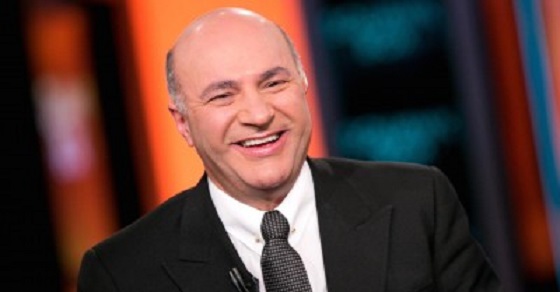
 Alberta1 day ago
Alberta1 day agoProposed $70 billion AI data centre in MD of Greenview could launch an incredible new chapter for western Canadian energy
-

 Brownstone Institute8 hours ago
Brownstone Institute8 hours agoA Potpourri of the World’s Unexposed Scandals
-

 Alberta1 day ago
Alberta1 day agoYour towing rights! AMA unveils measures to help fight predatory towing
-
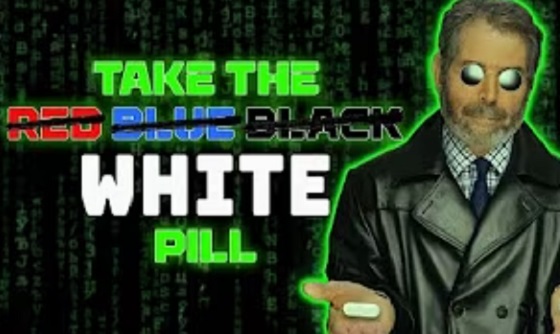
 Economy6 hours ago
Economy6 hours agoThe White Pill: Big Government Can Be Defeated (Just Ask the Soviet Union)
-

 conflict5 hours ago
conflict5 hours agoTrump has started negotiations to end the war in Ukraine
-
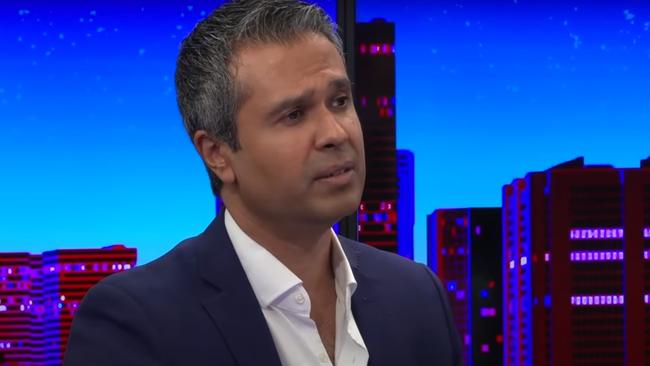
 COVID-194 hours ago
COVID-194 hours agoEsteemed UK Doctor pleads with governments to cancel COVID-19 vaccines
-
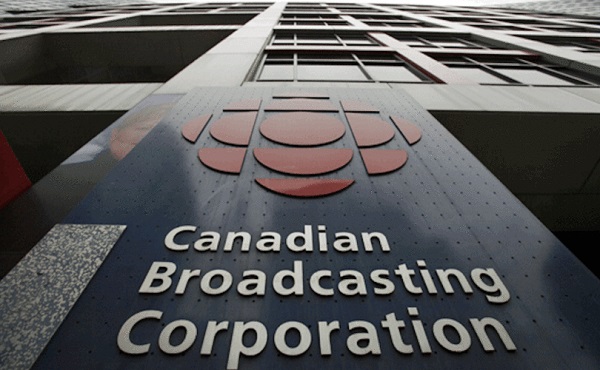
 Business3 hours ago
Business3 hours agoThe CBC gets $1.4 billion per year, but the Trudeau government wants to give it more
-
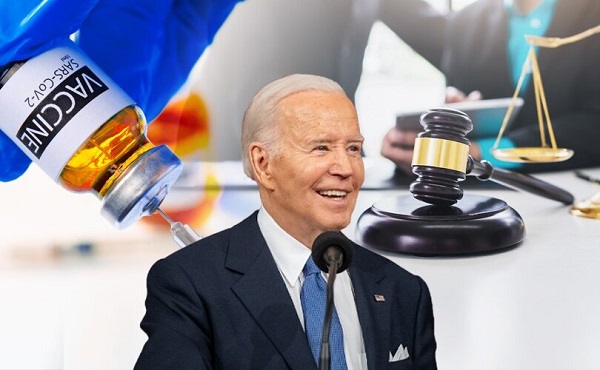
 COVID-199 hours ago
COVID-199 hours agoBiden HHS extends immunity for COVID shot manufacturers through 2029






